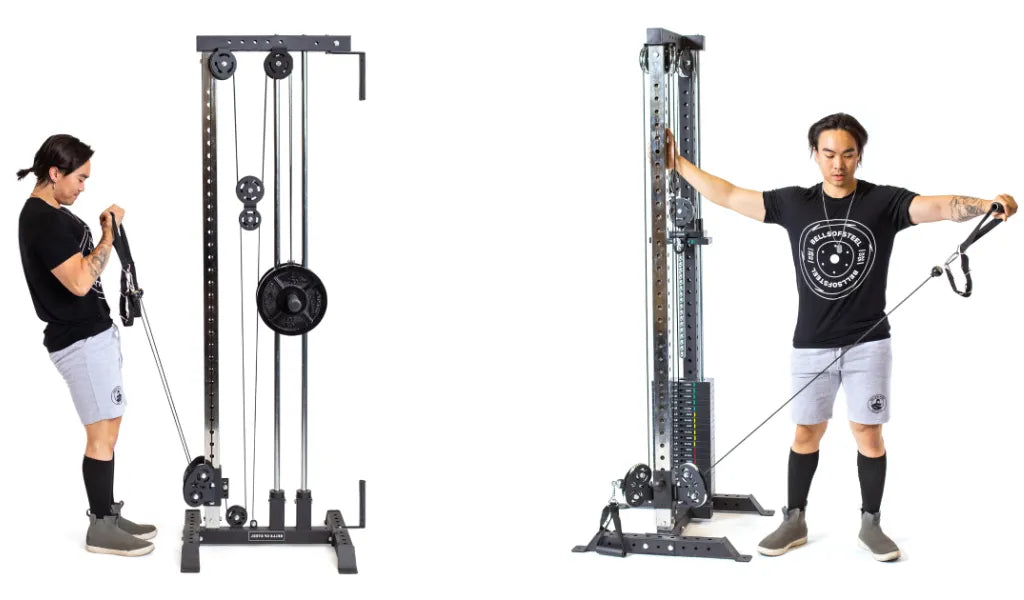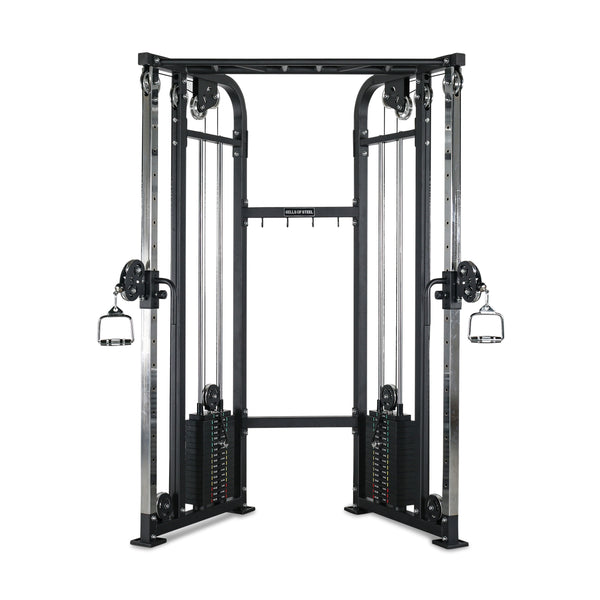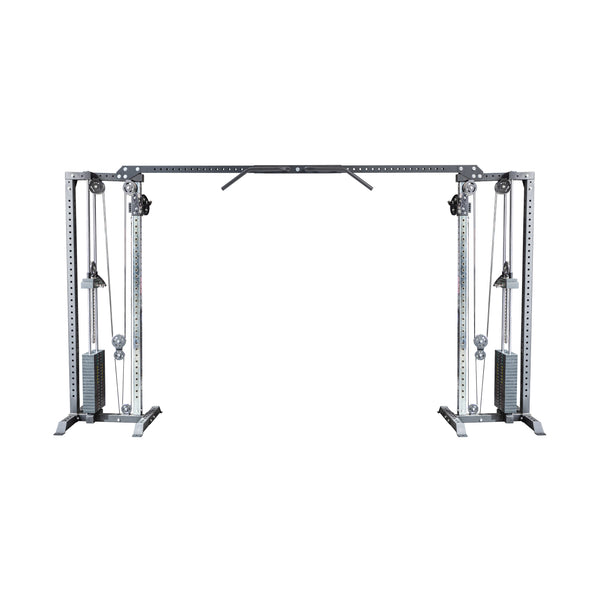If you’ve been digging around the home gym rabbit hole long enough, you’ve probably noticed something: cable systems come in two flavors—plate-loaded and weight stack. The obvious difference? One requires you to load your trusty weight plates, and the other comes with a built-in weight stack, usually with a nice little pin for easy adjusting. But let’s not stop there; let’s dive into the nitty-gritty of which option might be better for your home gym and your wallet.
So, buckle up, because we’re about to take a look at these two cable machine contenders and find out which one earns a spot in your sweat cave.
What’s the Deal with Plate-Loaded Cable Systems?
The Budget-Friendly Beast
If you’re someone who appreciates versatility without making your wallet weep, plate-loaded cable systems are calling your name. These bad boys rely on the weight plates you probably already have lying around your gym floor. You just pop the plates onto the loading horn, and voilà, you’re ready to crush those lat pulldowns and tricep pushdowns. No extra cash spent on a built-in weight stack.
Pro: More bang for your buck.
Con: A little extra hustle needed to load and unload plates between exercises.
Versatility for Days
The best thing about plate-loaded systems is their adaptability. You can load them up with plates you already own, meaning you can go as heavy (or light) as you want. Got a set of calibrated plates? Cool. Just rockin' the bumper plates? They work too. You control the weight load, which is excellent if you're mixing and matching different kinds of workouts.
Pro: You control the weight, and they work with any kind of plate.
Con: Manually changing plates can be a bit of a time-suck during supersets.
Space and Size
Plate-loaded systems are sometimes more compact, which makes them a great fit if your home gym is doubling as your garage, laundry room, or occasionally a guest bedroom. Without the bulk of a weight stack, these systems tuck in neatly, offering maximum versatility without hogging floor space. Of course, it depends on the offering.
Pro: Compact and space-efficient.
Con: Requires space to store weight plates nearby.
What About Weight Stack Cable Systems?
Convenient, But at a Cost
Ah, the weight stack system—the Cadillac of cable machines. With a built-in stack of weights and a sleek little pin to adjust your load in seconds, weight stack systems are all about convenience. No need to drag out plates or swap them mid-workout; just pull the pin, slide it in, and boom—you’re ready to go.
Pro: Quick and easy weight changes.
Con: You’re going to feel it in your wallet.
Pre-Set Limits
Weight stack systems typically have a max weight limit determined by the built-in stack. If you’re a lifter who enjoys pushing your boundaries (and your muscles), you might find the weight capacity a little... underwhelming. Once you hit that upper limit, it’s game over unless you upgrade to a beefier stack (which could mean $$$).
Pro: No need for extra plates.
Con: You’re stuck with whatever max weight the machine offers.
Bulky Business
Let’s talk space. Weight stack systems tend to be bulkier because, well, they’ve got a massive stack of weights built into them. This can eat up more precious real estate in your home gym, making them less ideal for small spaces.
And if you get a compact version? Great… but moving a weight stack around is a real treat.
Pro: All-in-one convenience.
Con: Takes up more floor space and can be harder to move around.
Which One is Right for You?
So, which system deserves a spot in your home gym? It depends on your goals, space, and budget. Let’s break it down.
Choose a Plate-Loaded Cable System If:
- You’re on a budget. Plate-loaded systems cost less upfront and make use of plates you probably already own.
- You need versatility. You can load it with any kind of plate, and it can grow with you as you get stronger.
- You’re short on space. They’re compact and can fit into tight corners.
Choose a Weight Stack Cable System If:
- You value convenience. No fiddling with plates here—just adjust the pin and keep lifting.
- You want a sleek, all-in-one setup. Weight stack systems are aesthetically pleasing and come ready to use.
- You don’t mind spending more. The convenience and built-in stack come with a higher price tag, but for some, it’s worth it.
FAQs About Plate-Loaded vs Weight Stack Cable Systems
Q: Which is better for a small home gym?
A: A plate-loaded cable system is the better choice for small spaces. They’re more compact and don’t require the bulk of a built-in weight stack.
Q: Which is more budget-friendly?
A: Hands down, a plate-loaded system is the more budget-friendly option, especially if you already own weight plates. Weight stack systems will cost you more upfront.
Q: Are weight stack systems better for convenience?
A: Yes! Weight stack systems are great for quick and easy weight changes. No need to stop and load plates mid-workout.
Q: Can I upgrade the weight on a weight stack system?
A: Some weight stack systems allow for upgrades, but it’s usually more expensive than just adding another plate to a plate-loaded system.
Conclusion: Choosing Your Cable System
At the end of the day, both plate-loaded and weight stack cable systems have their merits. If you're looking to save space and cash, a plate-loaded system is the way to go. But if convenience and sleek design are at the top of your wish list, the weight stack system might just be your gym’s new crown jewel.
Need the best of both worlds? The Bells of Steel Plate-Loaded Functional Trainer lets you load up your plates for full control over your workouts, saving you both space and cash. Let’s be honest—who doesn’t love a two-for-one deal?



